The light that we see is understood in a narrow spectrum of electromagnetic radiations.
As shown in Figure 1, we can only see a narrow band of frequencies and according to their values we have as the sensation of the colors.
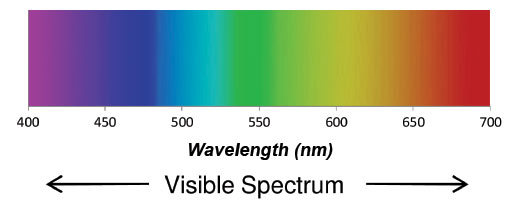
However, under the red and above the violet, in terms of frequency, we have forms of radiation that have the same behavior of light but cannot be seen.
So, under the red we have the infrared radiation, typically emitted by hot bodies, and above the violet we have the ultraviolet radiation.
The reader can learn more about these radiations reading our article: ART257E - How the LEDs Work
If we have a body or device that emits infrared radiation it will not be visible to us, but there are creatures that can see them and many electronic devices sensitive to them which are fairly used in several applications.
The reader may find on this site articles about these applications such as infrared alarms (ART235E, ART299E, and many others).
On the internet you can also download some applications that increase your cell phone sensitivity to infrared radiation, allowing them to be best used in our experiments.
Among them we include:
- Infrarot Kamera (german)
- Thermal Camera
- Night Vision
-Thermal Imaging Heat
The important fact for our experiment is that we can easily generate infrared radiation using special LEDs and our phone can see this radiation.
This brings us to a very simple experiment, using any phone that has a camera we prove the existence of this radiation and more than that, we can eve have a practical use.
The Experiment
First we need to get an infrared LED and light it up and, of course, a camera phone.
LED1 - Common Infrared LED (any)
R1 - 470 ohms x 1/8 W - resistor (yellow, violet, brown) or 1k (brown, black, red)
B1 - 6 V - 4 small batteries
Miscellaneous: a contact matrix, wires, a camera phone
The circuit to light the LED is very simple, shown in Figure 2.
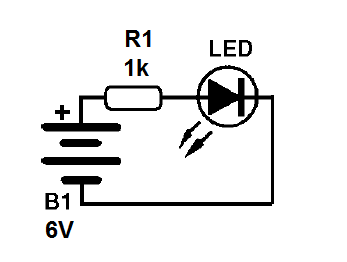
Note that the LED has the right polarity to connect, i.e., an anode (A) and a cathode (C or k). If it is reversed, it will not emit infrared radiation.
In Figure 3 we have the terminal identifications of this components as well as their appearance.
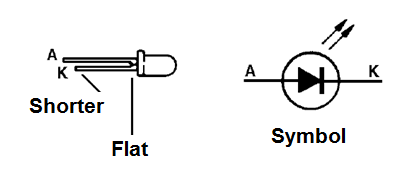
In Figure 4 we have the placement of the components on a small contact matrix.
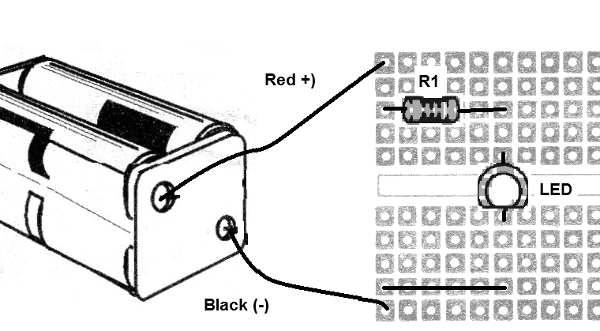
If your matrix is bigger, do not worry, just use the necessary holes to do the project.
It may also occur that your type of matrix is ??of 570 points or more in which there are horizontal rows to the power line. In this case, they will not be used.
The experiment
Putting the batteries in the support and making their connection to the matrix (observe the polarity by wire color), the LED will immediately emit infrared radiation, but you will not see.
However, if you turn off the light and focus your phone camera, you will see the LED on, it will be emitting infrared.
You can also check for other infrared sources with your mobile phone.
One of them is the remote control of your TV or stereo.
Just point the camera at these remote controls and press any function that the camera will record the issue.
You can also use your phone to detect the presence of security cameras that operate with an infrared emitter to illuminate the place it should record when it’s dark.
We show in Figure 5 the assembly and the cell phone used in the experiment.
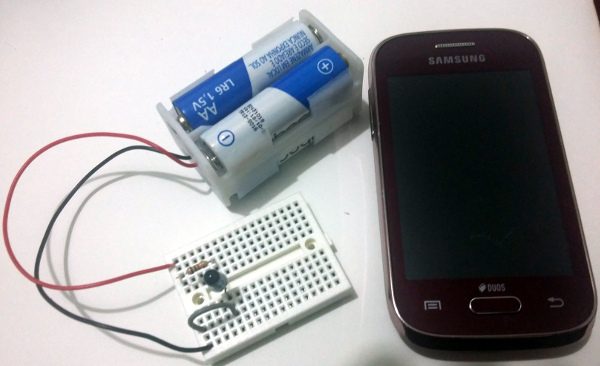
In Figure 6 we have some photos taken with our mobile in the dark using at first only the camera in normal mode and then one of the suggested applications.
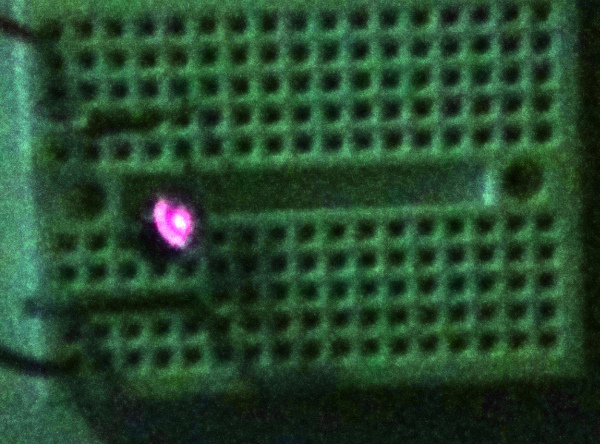
A picture with the camera and photo editing (automatic correction)
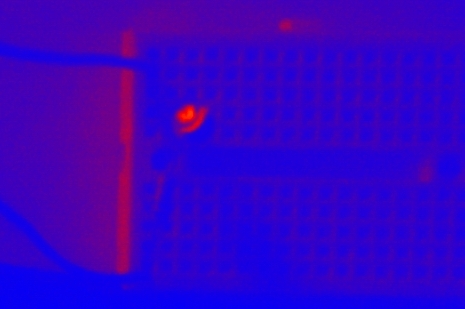
Explore your environment and find infrared sources that you never suspected they existed.
Suggested Activities:
- Search applications of the infrared
- Identify other emission sources
- Study how the infrared rays have been discovered
- Explain how the LEDs emit infrared
- Identify sensors for infrared
- Find out which animals can see or sense infrared radiation.




